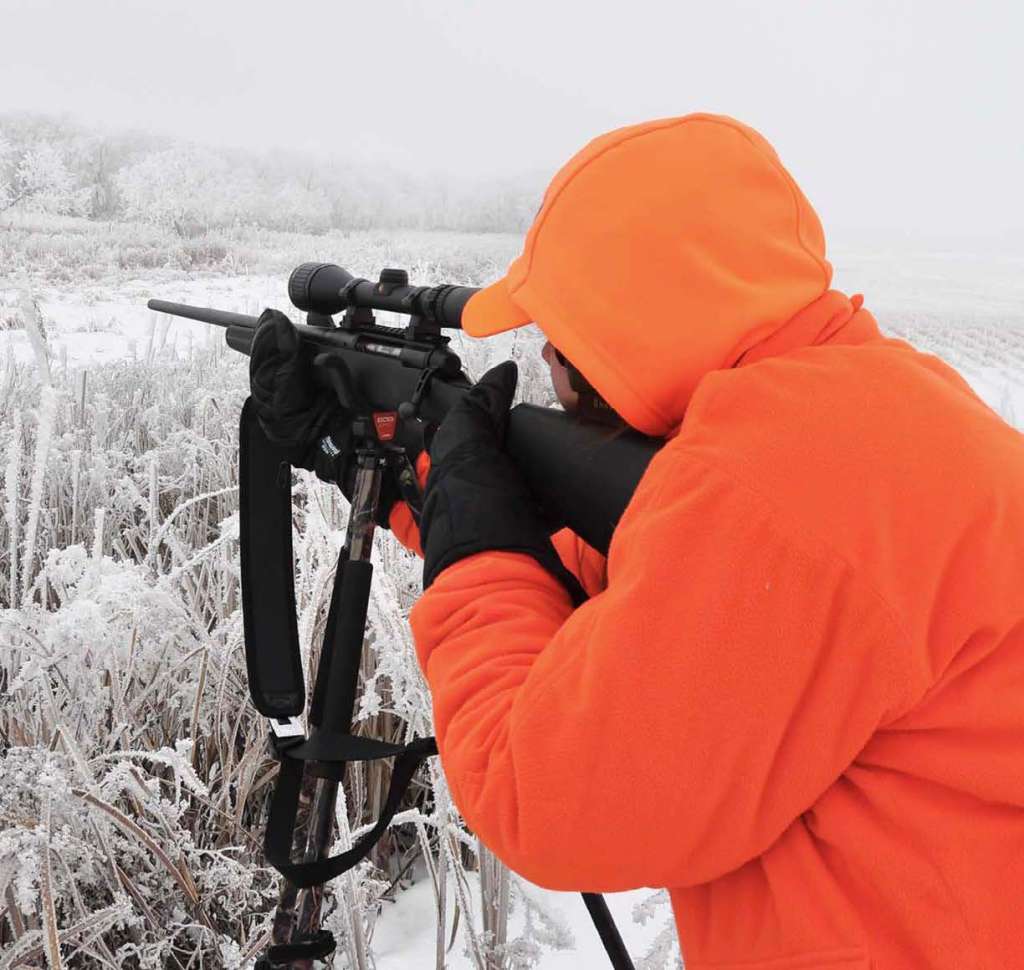How to Prepare Your Rifle for a Successful Hunt
Preparation is key to a successful and ethical hunt, and one of the most important steps is ensuring that your rifle is properly sighted in. Knowing how to sight in a rifle will tell you exactly where your bullet will hit at various distances. And it gives you confidence in the field, improves accuracy, and ensures you take ethical shots. This guide walks you through a simple yet effective five-step process to prepare for hunting season. From choosing the right rifle and ammunition to using a ballistic chart, sighting in your scope, and determining your comfortable shooting range, each step is designed to enhance your shooting skills and maximize your effectiveness in the field. Whether you’re a seasoned hunter or just getting started, these practical tips will help you fine-tune your shooting setup and make every shot count.
Before hitting the field, we, as hunters, can do several things to prepare for the hunt. One crucial step in preparing for a successful hunt is to head to the gun range to ensure that your gun is properly sighted in and to make sure you know where the bullet is hitting. This helps in the field so you know what your gun can do and what distance you are comfortable shooting.
I recommend following a simple five-step process
Step 1: Choose your gun and the right bullet for the game being hunted
Step 2: Use a ballistic chart to gain an understanding of the path your chosen bullet will take
Step 3: Head to the gun range and sight in your gun
Step 4: Determine your comfortable shooting distance before heading out on a hunt
Step 5: Put it all together and decide what tools will further help your accuracy while in the field

Step 1: Choosing Your Gun and the Right Bullet
Before determining what bullet you plan to use, you will need to decide what caliber of gun you want to use. For hunting Whitetail deer, mule deer, pronghorn antelope, moose and elk, I prefer a .270 Winchester. I like this caliber because it is extremely adaptable from one animal to another when hunting multiple species within a season. I also like this caliber because it shoots relatively flat, plus the recoil is less intense compared to other calibers. That makes it a great choice for women and kids. It is also reliable and provides the power needed to make a successful kill on big-game animals.
Several factors go into choosing a bullet, such as range, accuracy, power, price and availability. When using my Winchester 270, my preference for hunting big-game animals is the Winchester Power Max Bonded 130 grain. I like this bullet because it shoots well in my rifle, is great for long-range accuracy and has the power to successfully take down any target at both short and long ranges.

Step 2: Using a Ballistic Chart
Before going to the gun range, I like to use the Winchester Ballistics Calculator to chart the trajectory path of the bullets. This app is extremely useful. It gives you the ability to change the variables (such as the sight-in range, target range and sight height) to customize to your gun setup. I run multiple sight-in simulations to determine the range that I want to sight my rifle. When I am afield, I am usually doing spot-and-stalk hunting. I usually prefer to sight my rifle in at 2.5 inches high at 100 yards. That provides me with the confidence to shoot up to 300 yards without having to make a large adjustment on where to hold on my target. Sighting my rifle in at 2.5 inches high at 100 yards lets me study the bullet’s flight path. My bullets will start low. At 25 yards, they will zero out, then rise to 2.5 inches high at 100 yards. They peak 3.1 inches high at 150 yards, zero out again at 250 yards, and then are 3.7 inches low at 300 yards. Given that the chest/vital zone of the Saskatchewan bucks I hunt is about 15-20 inches, I can hold the crosshairs centered on the deer’s chest from 0-300 yards and still be able to make a lethal and ethical shot with this setup. With this information in mind, I can go to the gun range confident in how I would like to set up my scope.
Depending on the style of hunting you plan to do, you may choose to sight your gun for a closer or farther range. For example, when sitting in a blind where your longest shot is 100 yards, I suggest sighting your gun to be bang-on at 100 yards, rather than being 2.5 inches high, so that you can simply hold the crosshairs on your target.
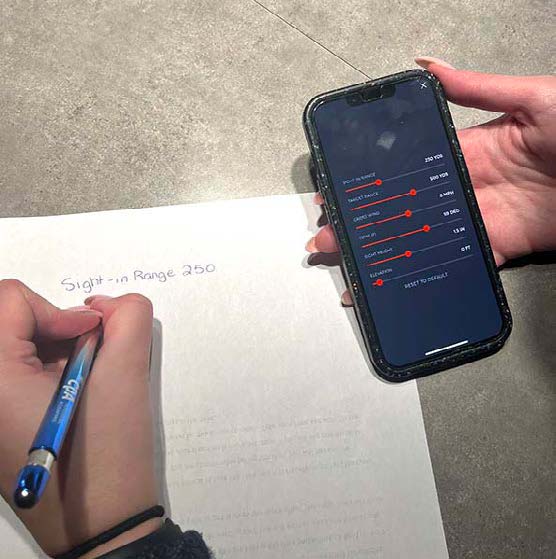
Step 3: At the Gun Range
After checking the ballistic chart, I will head to the gun range. Since the range I use is an outdoor range, I find it is best to go on a calm day. That way, I’m confident that my gun is accurately sighted both horizontally and vertically. I also like going to the gun range when it is not too hot out because it takes less time between shots for my rifle barrel to cool down. That helps ensure the accuracy of my shooting. At the gun range, I like to use the Caldwell Shooting Rest to help hold my gun in place to increase the accuracy of my shots when shooting my rifle.
To start, I will shoot three bullets through my rifle at a 100-yard target to get a baseline for where my gun is now as opposed to the previous season. If my scope needs adjustment, I will make small adjustments from there, shooting three bullets at a time when doing so. It’s important to give your gun time to cool off between shots to ensure accuracy when at the range.
Once I am happy with where my gun is shooting, I’ll take some practice shots at various ranges to confirm the ballistic chart findings. When doing so, I try and remember to keep my face on the stock of the gun while shooting, slowly squeezing the trigger rather than pulling it, and unloading and reloading my gun between shots. It’s important to note that if the gun you are sighting in is new, you need to make sure that all the packing grease is cleaned up before sighting in to make sure you achieve maximum accuracy.
When you are hunting in the field, it’s important to wear hearing protection, but it’s even more important to wear hearing protection while you are at the gun range. I like to wear Howard Leight Shooting Earmuffs because I can keep them on the entire time I’m at the range. They pick up quiet noises, such as people talking and the sound of people walking, but most importantly, they safely reduce the muzzle blast from your rifle, and from others who are there shooting, to safe levels.
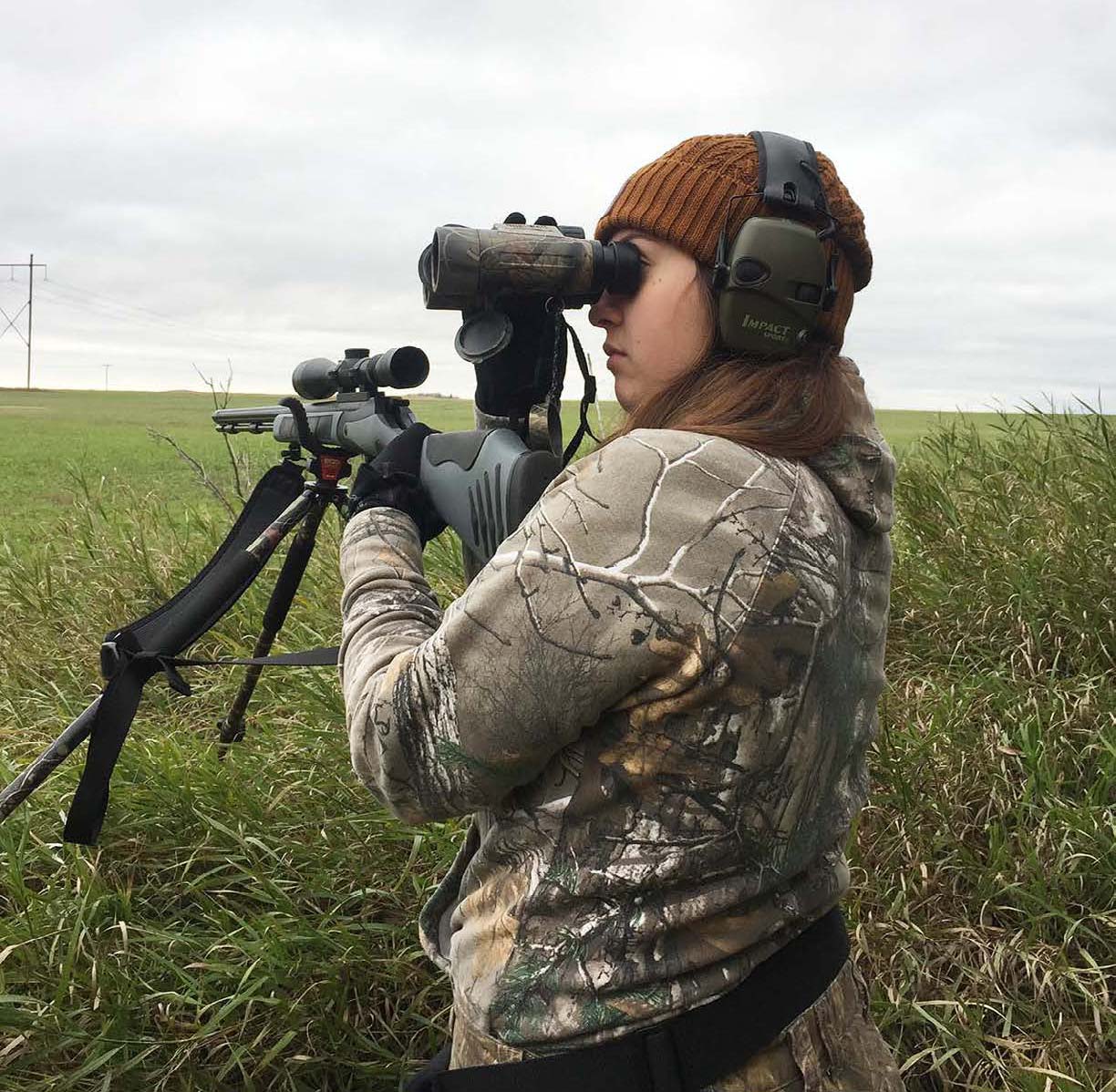
Step 4: Determining a Comfortable Shooting Range
To determine your comfortable shooting range, you need to spend time seeing how well you can shoot at various distances. As you shoot, you’ll notice that shot groupings at closer ranges will be much tighter than they are at longer ranges. Many have said that if you can group your shots into a pie plate, grouping at a certain range, you are capable of killing a deer at that range.
I prefer to limit my shots to ranges where my groupings are tighter than six inches, and then anything under that distance is my comfortable shooting range. When I first started hunting, I was comfortable shooting within a 100-yard range. With more and more practice, I have extended that range to 300 yards. I now utilize the point-blank hold to the 300-yard range.
After visiting the gun range and before hitting the field, I like to mark down the ballistic path in notes on my phone. That gives me easy access to this information in the field. If you have a scope cover, you can also tape a small piece of paper with those notes inside the cover so that when you open it up to shoot, the information is right there in front of you.

Step 5: Putting It All Together in the Field
Another factor that goes into your comfortable shooting range is the kind of rest you’re using. Personally, my comfortable shooting range changes based on whether I am shooting freehand standing, freehand kneeling, on a set of shooting sticks or bipod, or leaning on a fence post or tree.
My personal preference is to shoot using a set of bog pod shooting sticks or other bipod. This is where my comfortable shooting range is at its maximum. This gives me the ability to have a stable shooting rest while also being able to make quick adjustments so I know where my bullet will hit. Using a fence post or a tree can also provide stability when shooting. However, it’s important to ensure that the fence post is not rotten and is sturdy in the ground before using it as a rest.
When freehand shooting, I find that my comfortable shooting range is a shorter distance because I do not have as much stability compared to using a rest. Keeping this in mind, I try to shoot with a rest, but in the field, there isn’t always the time to find a rest. That’s why it’s important to know what distance you are comfortable shooting. That way, you can either take the shot or take a pass while you try to move in closer for an ethical shot. Knowing what my comfortable shooting range is and where to hold on to the animal can make this decision an easier one.
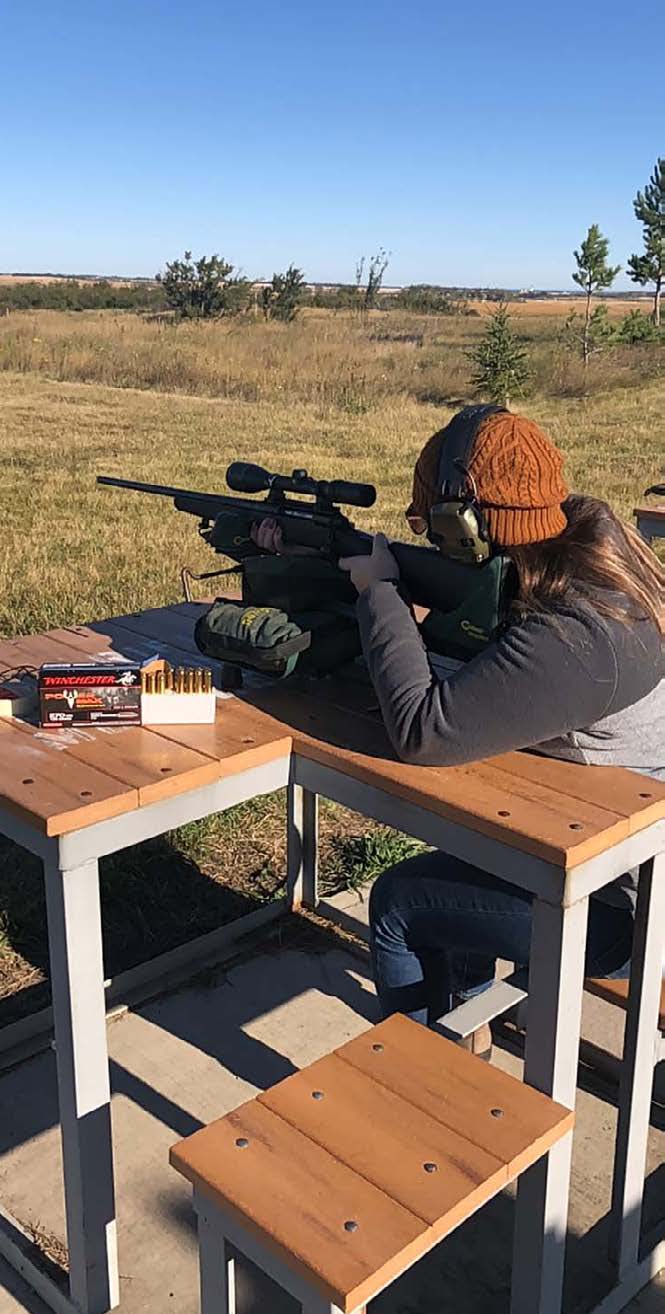
I almost always hunt with my dad or my brother. To help me determine if a deer is within my comfortable range, my hunting partner often uses range-finding binoculars, such as the Vortex Fury HD 5000 10×42 Rangefinding Binoculars, to confirm the range of my target. By using one of the best rangefinders for hunting, we can determine the distance to the deer and if it is in my comfortable range.
Other factors to consider when determining if you are comfortable taking the shot include whether the target is stationary or on the move. I find that if my target is moving, my shooting range is shortened to 200 yards. I find this to be a much harder shot.
Another factor to take into consideration is whether you are shooting uphill or downhill. Both factors can change the point of impact of your bullet. On shots taken at steep angles, your bullet can hit higher than when you are shooting on a flat or gradual slope.
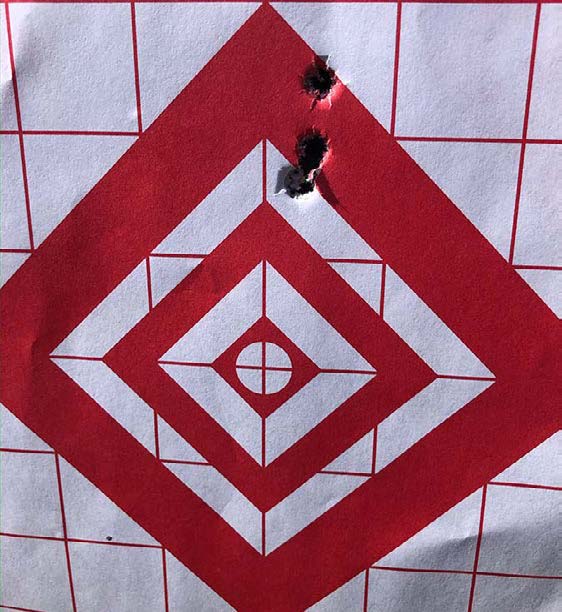
In addition, when determining if you are comfortable taking the shot, you’ll want to ensure that it is an ethical shot. Keep in mind whether there are any other animals around your target and if there are any buildings or farmyards behind or around your target as well. Weather conditions, such as wind, can also affect how comfortable you are taking the shot and where to hold on to your target. You may need to compensate your hold if there is a strong crosswind. Keep in mind that the farther away your target is, the more crosswinds will affect your bullet. For these situations, you can use the Winchester Ballistic Calculator to show the wind drift.
It is important to ensure that any shot you take is safe and ethical. However, it is equally important to ensure that you are comfortable taking the shot and that you know your comfortable shooting range. If the shot is within your comfortable shooting range, you will have more confidence in your shooting and will find you are more accurate. If you are not comfortable taking the shot, do not fret. There will always be more opportunities. Take your time and wait for the right opportunity, and you will find success in the field.
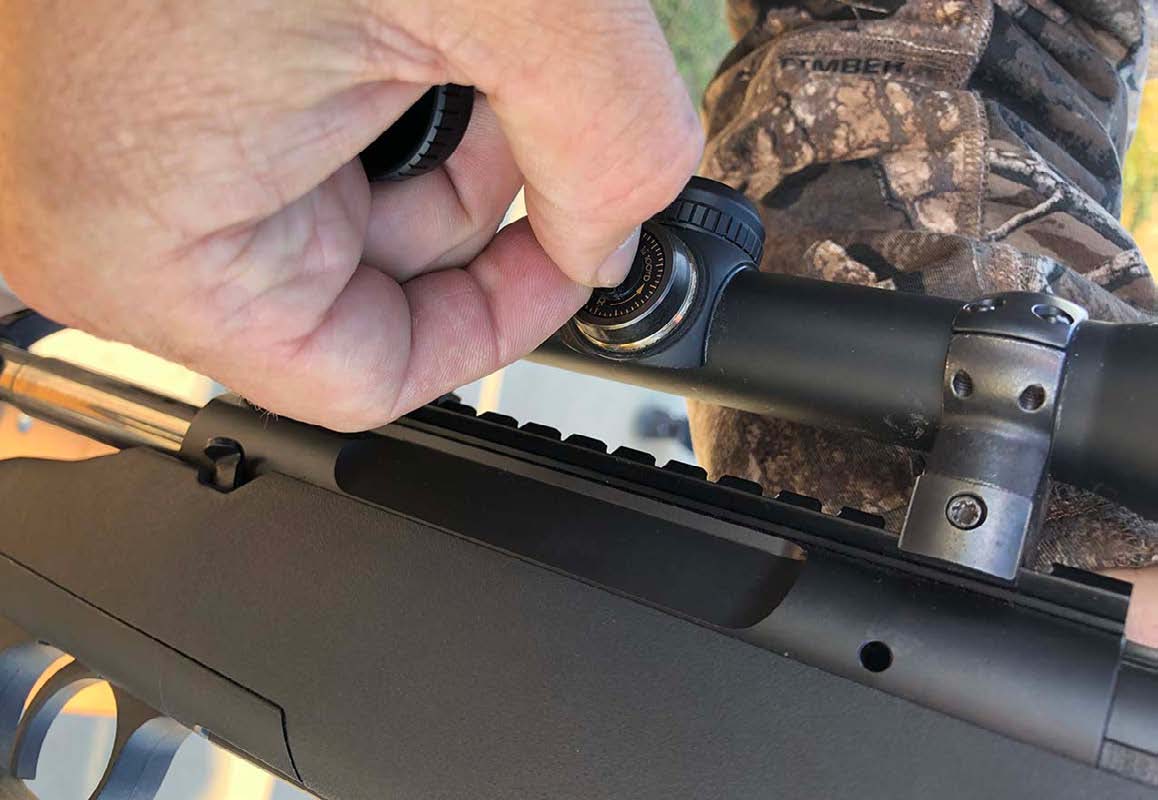
Read Also: How To Select the Best Scope for your Rifle
Per our affiliate disclosure, we may earn revenue from the products available on this page. To learn more about how we test gear, click here.



